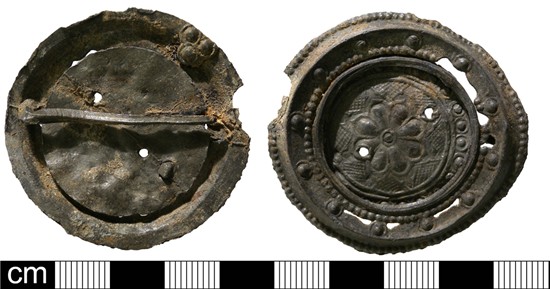A composite lead alloy disc brooch with integral pin, probably made and worn in the late 15th – early 16th century.

This brooch was a relatively cheap, mass produced piece of jewellery made of lead because it could be worked quickly and easily. It may originally have been painted to make it look more decorative. It is likely that similar brooches were very common in the late medieval period, but they are rarely recorded in Norfolk now because they break so easily into tiny fragments which are impossible to recognise if they are found at all. More examples have been recorded in London where fragile objects like this are better preserved under layers of deep urban deposits (See Egan and Pritchard, 2002, 261, fig.169 and 262, fig.170).
High quality jewellery made of copper alloy, silver or even gold might be impressive to look at, but this brooch is probably more representative of the type of dress accessory worn by the majority of people whose portraits were never painted, whose lives are rarely detailed in history books and who we would know very little about if we didn’t record archaeological finds.
Find out more here: NMS-247B85
Bibliography
Egan, G and Pritchard, F. (2002) Dress Accessories 1150 – 1450, fourth addition, The Boydell Press, Bury St Edmunds